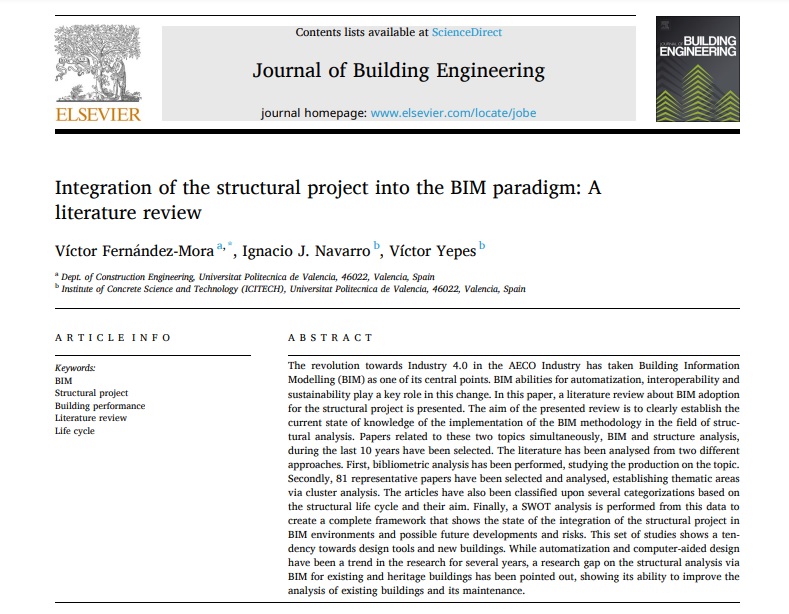 El Building Information Modelling (BIM) se está adoptando cada vez más en empresas privadas del sector de Arquitectura, Ingeniería, Construcción y Operación (AECO), y con ello surgen nuevas herramientas y funcionalidades. En el mercado español, los proyectos de reforma son cada vez más solicitados debido al envejecimiento del stock de viviendas y la necesidad de analizar la durabilidad de las estructuras existentes.
El Building Information Modelling (BIM) se está adoptando cada vez más en empresas privadas del sector de Arquitectura, Ingeniería, Construcción y Operación (AECO), y con ello surgen nuevas herramientas y funcionalidades. En el mercado español, los proyectos de reforma son cada vez más solicitados debido al envejecimiento del stock de viviendas y la necesidad de analizar la durabilidad de las estructuras existentes.
Este nuevo estudio presenta una herramienta integrada en BIM que permite evaluar el índice de durabilidad en elementos estructurales específicos a través de una inspección visual automatizada, lo que mejora la sostenibilidad del sector y determina el momento crítico para rehabilitar la estructura.
El trabajo se enmarca dentro del proyecto de investigación HYDELIFE que dirijo como investigador principal en la Universitat Politècnica de València.
Abstract:
As Building Information Modelling (BIM) is increasingly adopted through private businesses in the Architecture, Engineering, Construction, and Operation (AECO) Industries, new tools, procedures, and functionalities appear. In the last years, BIM has proven its advantages by providing benefits to professionals and guiding them towards a new horizon. Currently, the industry is changing in the Spanish market, and refurbishment projects are more demanded than construction projects involving the design of buildings from scratch. As Spanish housing stock grows older, durability and damage in existing structures need to be analyzed during the refurbishment project’s early stages. Structural durability is a critical factor in extending the life span of a building and improving the industry’s sustainability. This paper presents a tool integrated into BIM environments that can evaluate the durability index in a specific structural element based on data from a visual inspection. This automated analysis shows if any damage is caused by durability factors, such as steel rebar corrosion, and how much time is left until the damage is critical. This tool enables new functionality in BIM environments to control durability and determine when it is critical to rehabilitating the structure.
Referencia:
FERNÁNDEZ-MORA, V.; YEPES, V.; NAVARRO, I.J. (2022). Durability damage indicator in BIM environments. Proceedings of 3rd Valencia International Biennial of Research in Architecture. Changing priorities. 9-11 November 2022, Valencia, Spain. https://doi.org/10.4995/VIBRArch2022.2022.15191
Os paso, para su descarga, el artículo completo, pues está publicado en abierto.

